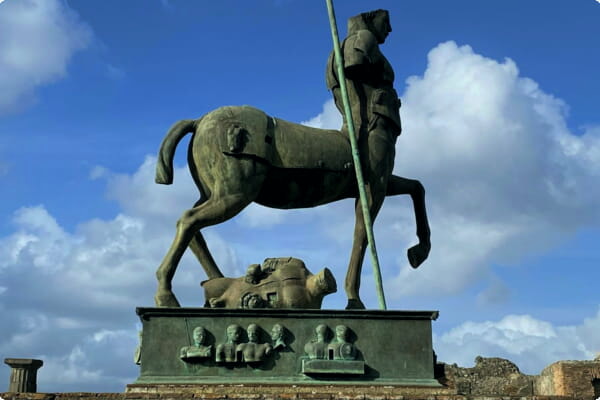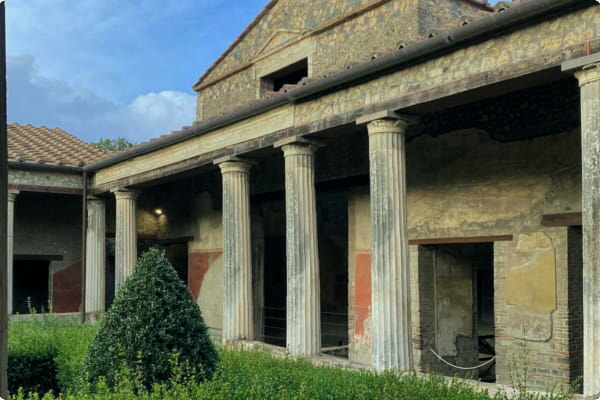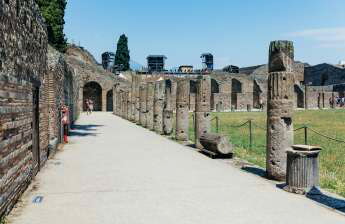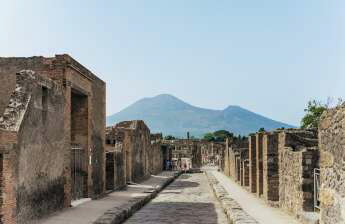Whether you're visiting Pompeii for the first time or if you're a seasoned tourist, here are some interesting facts you may not know about this ancient Roman city.
Ancient Greeks ruled and inhabited Pompeii
Located on the west coast of Italy, Pompei is an ancient Roman city. It was a flourishing resort town for the elite of the Roman state. The region was famous for its olives, grapes and wine. The area was a center for artisans' shops, brothels and taverns.
After the Samnite wars, Campania became part of the Roman confederation. Its rich volcanic soil and abundance of olives made it a centre for commerce and trade. The wealthy citizens of Rome would retreat to the area during the summer months.
Pompei was built on the slopes of Vesuvius. The first settlements date back to the Iron Age (IX-VII centuries B.C.). It was then inhabited by Oscan-speaking descendants of Neolithic inhabitants of the region.
Mount Vesuvius erupted the day after the annual Roman festival
Hundreds of years ago, an ancient Roman city named Pompeii was destroyed by an eruption of Mount Vesuvius. The eruption, which lasted 25 hours, killed 2,000 people and destroyed the neighboring town of Herculaneum.
The day before the eruption, Mount Vesuvius celebrated its annual festival of Volcanalia. This festival is held in honour of the Roman god of fire, Vulcan. In the early morning of the eruption, Mount Vesuvius began throwing a column of pumice and ash into the air.
On the night of the eruption, an earthquake shook the area, and parts of the city of Naples were severely damaged. Strong tremors caused many buildings to collapse.
The ash and debris clouds may have been big enough to block the sun
During the phreatomagmatic eruption of Mount Vesuvius on August 24, A.D. 79, a huge column of ash and pumice buried the Roman city of Pompeii. It is estimated that 80 percent of the city's population fled the early part of the eruption. Thousands of people walked, rode horses, or boarded boats to get away. Some died in the first wave of evacuation.
Although the Vesuvius eruption was one of the largest in history, it wasn't the first. In fact, it may have happened only a few weeks before. There were several earthquakes reported around Italy in 217 BC.
The Vesuvius eruption was a phreatomagmatic event, meaning it was the product of magma superheated by steam. In addition, it was a pyroclastic (pyroclastic means volcanic debris) eruption, which meant the ash cloud was a bit bigger than normal.

The skeletons of the people buried at Pompeii
Using state-of-the-art techniques, scientists are now analyzing the skeletons of the people buried at Pompeii. These skeletal remains are shedding light on the cultural life of the ancient town before it was destroyed by a volcanic eruption in AD 79.
Archaeologists believe that the bodies of Pompeii victims were buried in buildings. In this way, they were trapped, and their bodies could be preserved. However, some bodies remained in contorted positions. This is due to the effect of heat on their bodies after they died.
When the volcano erupted, its cone collapsed, and ash and debris poured over the city. The volcanic ash buried all but the tallest buildings. This layer of ash left behind casts of the skeletal remains of victims in their final moments.
Mount Vesuvius is a stratovolcano
During the eruption of Mount Vesuvius in AD 79, the Roman city of Pompeii and its neighbor Herculaneum were buried. The area was also covered in toxic fumes. A few surviving residents began salvage work.
The eruption lasted two days and produced a column of volcanic ash. It also created a steam from magma. Vesuvius is a part of a volcanic arc that extends from Campania to Sicily. It has erupted at least three dozen times since AD 79.
The volcano is located near Naples, Italy, in the Gulf of Naples. It sits on a tectonic boundary between the Eurasian plate and the African plate.
Mount Vesuvius is a composite stratovolcano composed of layers of lava flows and volcanic ash. The lava is accompanied by pumice.

The wind blows south-west in Pompeii
During the early part of the eruption, the wind was blowing north-west in Pompeii, but it soon changed direction to blow south-west. The wind brought fire to the city and killed thousands of people. It also destroyed the buildings, buried them in ash and blew pumice stones over them.
The ashfall deposits left behind a hard shell around the bodies of those who died. The ashes also burned the victims' lungs, leaving them in a semi-curled position.
The pumice sifting down from the volcano engulfed the residents of Herculaneum and Pompeii, which led to the collapse of the roofs and walls of the city. The ashfall deposits also buried the remains of about 300 dead, some of them in arched vaults.





